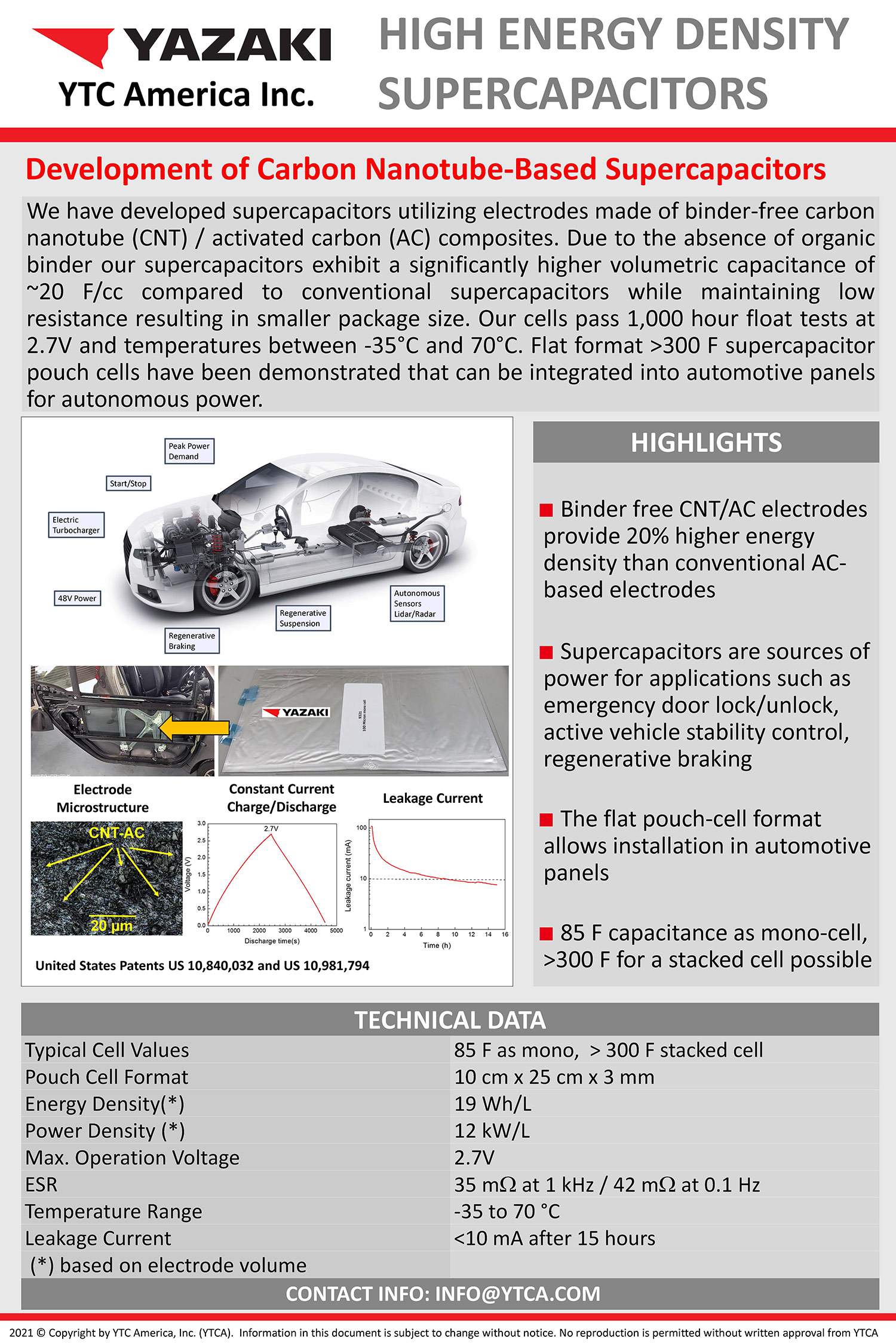High Energy Density Supercapacitors


High Energy Density Supercapacitors

Development of Carbon Nanotube-Based Supercapacitors
We have developed supercapacitors utilizing electrodes made of binder-free carbon nanotube (CNT) / activated carbon (AC) composites. Due to the absence of organic binder our supercapacitors exhibit a significantly higher volumetric capacitance of ~20 F/cc compared to conventional supercapacitors while maintaining low resistance resulting in smaller package size. Our cells pass 1,000 hour float tests at 2.7V and temperatures between -35°C and 70°C. Flat format >300 F supercapacitor pouch cells have been demonstrated that can be integrated into automotive panels for autonomous power.
- Binder free CNT/AC electrodes provide 20% higher energy density than conventional AC-based electrodes
- Supercapacitors are sources of power for applications such as emergency door lock/unlock, active vehicle stability control, regenerative braking
- The flat pouch-cell format allows installation in automotive panels
- 85 F capacitance as mono-cell, >300 F for a stacked cell possible
Development of Carbon Nanotube-Based Supercapacitors
We have developed supercapacitors utilizing electrodes made of binder-free carbon nanotube (CNT) / activated carbon (AC) composites. Due to the absence of organic binder our supercapacitors exhibit a significantly higher volumetric capacitance of ~20 F/cc compared to conventional supercapacitors while maintaining low resistance resulting in smaller package size. Our cells pass 1,000 hour float tests at 2.7V and temperatures between -35°C and 70°C. Flat format >300 F supercapacitor pouch cells have been demonstrated that can be integrated into automotive panels for autonomous power.
- Binder free CNT/AC electrodes provide 20% higher energy density than conventional AC-based electrodes
- Supercapacitors are sources of power for applications such as emergency door lock/unlock, active vehicle stability control, regenerative braking
- The flat pouch-cell format allows installation in automotive panels
- 85 F capacitance as mono-cell, >300 F for a stacked cell possible
